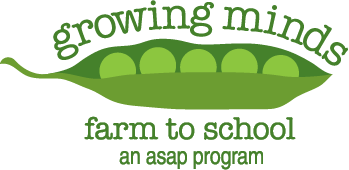Kituwah is the Mother Town–or original home–of the Cherokee people. The Cherokee have a long agricultural history, with community at its core. In this Meet Your Farmer video, join three members of the Eastern Band of Cherokee Indians–Ty Boyd, David Anderson, and Mike Crowe–to learn about the history of this sacred place. See how Ty, David, Mike and others continue to farm their ancestral land communally, growing crops like potatoes, curly mustard greens, collards, pumpkins, sweet corn, and blueberries.
This video could be used as a starting point to further explore Cherokee history, culture, or agricultural practices (both historic and modern); the meaning of community; specific agricultural practices such as weeding, planting, and harvesting; or particular fruits and vegetables. Find recommended books, resource lists, and lesson plans to pair with this video below.
Viewing Comprehension Questions
- What is the name of the Cherokee Mother Town?
- What crops did you see the farmers harvesting in this video?
- What does Ty mean when he says that they are “grading” the potatoes?
- What happens to the leaves of spicy mustard greens after a frost?
- According to David, what are the four “ingredients” needed to grow greens?
- According to academic and archaeological studies, how long have the Cherokee people occupied the land at Kituwah?
- What are the names of the crops referred to as the “three sisters”?
- According to Mike, why is agriculture important to the Cherokee people?
- What does Mike say makes the Eastern Band of Cherokee Indians unique in comparison to many other modern Native American tribes?
Journal Prompt:
At Kituwah farm, Cherokee tribal members grow food together to share with their community. Why do you think it’s important to do things together as a community? What community(ies) are you and your family a part of? What things do you do to support other members of your community(ies)? What are some of the benefits of farming together as a community?
Learn about the Cherokee Removal of 1838

In the video above, Mike references the Cherokee removal in 1838, which was part of the forced relocation by the United States government of approximately 100,000 Native Americans between 1830 and 1850. Through a series of forced removals, Native Americans who resided east of the Mississippi River were forced to leave their ancestral homes and march along the Trail of Tears to land west of the Mississippi that had been designated as “Indian Territory”. Thousands of people died along the way.
As part of the Cherokee removal, Mike mentions in the video that the Cherokee people’s “First Fire” was moved from Kituwah to land in what is now Tahlequah, Oklahoma. Tahlequah is the capital of the the Cherokee Nation and Keetoowah Band. As a result of the forced relocation, there are now three federally recognized Cherokee tribes: the Eastern Band of Cherokee Indians in Western North Carolina (whose territory is called the Qualla Boundary), the Cherokee Nation, and the United Keetoowah Band of Cherokee Indians.
- Read about the Cherokee legend of the corn bead (also known as Job’s Tears) and learn the plant-based bead’s connection to the Trail of Tears, as well as to modern Cherokee jewelry-making traditions.
- Read the book Fry Bread: A Native American Family Story by Kevin Noble Maillard. Fry bread is a food made and eaten in modern Native American communities across the US. It has a historical connection to the forced relocation of Native Americans to reservations. “Fry bread is history. The long walk, the stolen land/Strangers in our own world/With unknown food/We made new recipes/From what we had.” Along with its historical roots, it’s also a food that creates solidarity between Native communities. Find curriculum connections and ideas for teaching this book from School Library Journal.
More Resources
Cherokee and other Indigenous-authored books about agriculture/nature:
- Felix the Frozen Frog by Lynn Lossiah
- The First Strawberries Retold by Joseph Bruchac
- We Are Grateful (Otsaliheliga) by Traci Sorell
- The Apple Tree by Sandy Tharp-Thee
- We Are Water Protectors by Carole Lindstrom
Fruit & vegetable resource lists:
- Potatoes and Sweet Potatoes
- Winter Greens
- Pumpkins
- Summer Squash (includes tips for planting a Three Sisters Garden)
- Berries
Garden lesson plans:
- What Plants Need (preschool)
- Weeding the Garden (preschool)
- Garden Planning (K-2)
- Planting in the Garden (K-2)
- Harvesting in the Garden (K-2)
- Potato Exploration (K-2)
